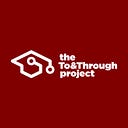The Downstream Impacts of School Choice on Chicago’s Black Communities

In the last two decades, Chicago Public Schools (CPS) has gone through a massive expansion of the city’s high school portfolio. In 2002, there were only 76 high schools; in 2018–19, there were 154, and only about one-quarter of ninth-graders attended their assigned neighborhood school.
This expansion has impacted different communities in different ways. In particular, Chicago’s Black communities experienced more dispersion — students going to different high schools — and more charter school enrollment than majority White, Latinx, Asian-American/Pacific-Islander, and mixed-race communities.
Chicago’s Black communities experienced more dispersion — students going to different high schools.
While the promotion of school choice may have addressed inequities in terms of expanding the number of high-quality options, the role it played in addressing or perpetuating racial inequities in community investment and residential segregation in Chicago is unclear.
Moreover, schools have long served as core institutions in communities that fulfill roles beyond educating young people. Schools bring together families and act as sources of stability and connectedness for efforts to support young people.[1]
However, the large number of schools serving students from a single community area means that community-based organizations and agencies seeking to support young adults are serving students who attend a multitude of high schools, which can deeply complicate their efforts and hinder collaboration between school-based practitioners and the adults who support students outside of school buildings. Yet the expansion of school choice has made it important for school-based practitioners to be aware that the community context of their students may be very different from the community surrounding their high school.
Community-based organizations and agencies seeking to support young adults are serving students who attend a multitude of high schools, which can deeply complicate their efforts and hinder collaboration between school-based practitioners and the adults who support students outside of school buildings.
As part of a research report on community attainment, we sought to understand the extent to which CPS students in a given community area were attending the same high schools. We calculated what we call a “school dispersion ratio,” which measures the number of attended schools per 100 ninth-graders in a community area. In other words, the total number of schools the ninth-graders living in a community area would attend, if that community area had 100 ninth-graders.
The figure below shows that there is a stark pattern in student dispersion by race, with the community areas that were majority-Black being the most likely to have their students dispersed across many different high schools: 21 of the 25 community areas with the highest dispersion ratios were majority-Black, while only one of the 25 community areas with the lowest dispersion ratios was majority-Black.
21 of the 25 community areas with the highest dispersion ratios were majority-Black, while only one of the 25 community areas with the lowest dispersion ratios was majority-Black.

This pattern raises questions about the reasons why students in majority-Black community areas are more likely to opt out of attending their assigned school, particularly compared to students in majority-White community areas.
While the expansion of the city’s high school portfolio may have addressed inequities in terms of the high school options students could access, it is important to acknowledge that students’ educational trajectories are not just a product of the schools they attend, but the past and current policies, practices, and beliefs that have shaped students’ communities. Addressing the enduring disinvestments in communities of color could be another avenue to help more students reach their full potential and transform the futures of their families, communities, and the city as a whole.
To further explore the To&Through Project and UChicago Consortium’s analyses of CPS students’ educational attainment through the lens of their community areas, read Approaching Chicago Student Attainment from a Community Perspective, the research report from which the text in this article was taken.
To explore CPS student attainment data for each of Chicago’s 77 community areas, visit the To&Through Community Milestones Tool.
